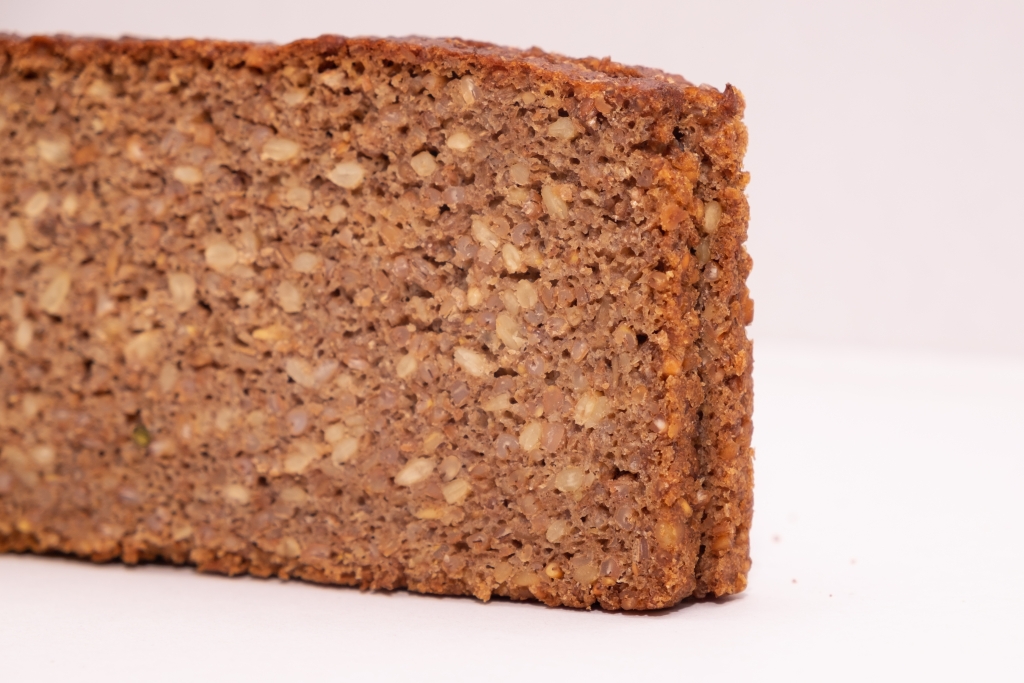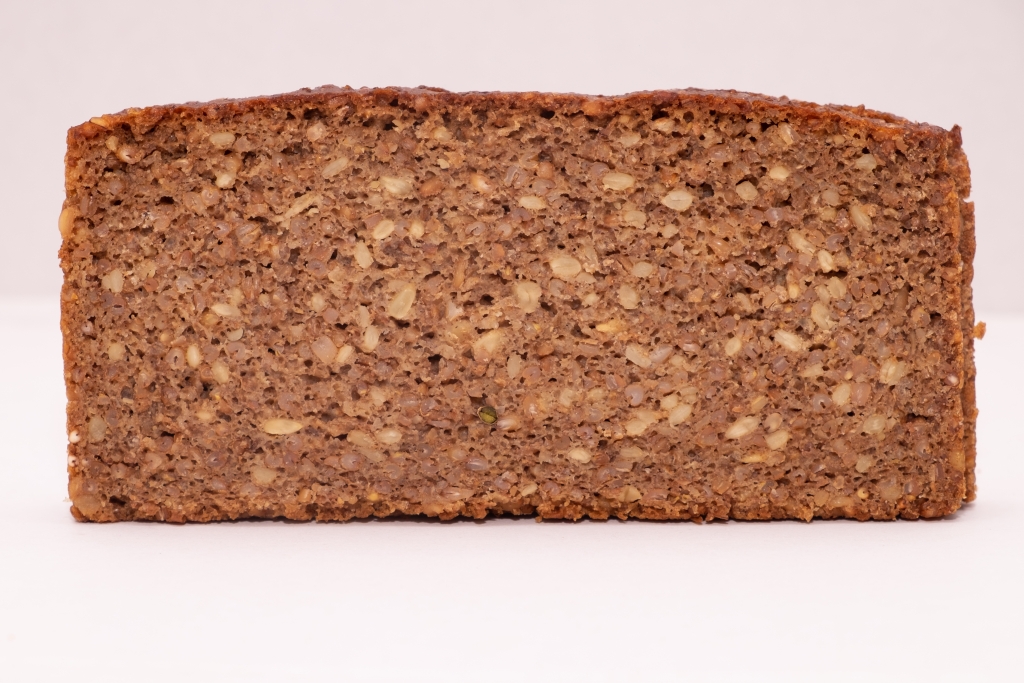Lovely bakers,
I would like to create a recipe for wholegrain rye bread based on the label of the bread I buy in the store when I'm not baking. Just for fun, for exercise. I think this is one of those Scandinavian whole grain rye breads. Isn't it? It is very healthy, tasty and nutritious. Very fragile to the touch and quite sweet in taste. I like it very much.
The ingredients on the label are as follows:
- cracked rye kernels 34.2%
- woda water
- sourdough starter 19.5%
- wholegrain rye flour 8%
- sunflower seeds 7.6%
- oat flakes 5%
- potato flakes
- salt
While it is easy to calculate the salt and oat content, I find it most difficult to calculate the water content. I do not know the legal rules for labeling food products, but it seems to me that the percentage of water in this bread relates to the amount of water in the finished product. So it is water in the previously soaked grains and water in the sourdough starter. Water loss during baking should also be taken into account. Am I wrong?
Based on these thoughs, I created the recipe for 2 x 450g loafs in the beta version:
- cracked rye kernels 170g+170g water for soaking
- sourdough starter 196g (100% hydration)
- wholegrain rye flour 80g
- sunflower seeds 38g+38g water for soaking
- oat flakes 25g+25g water for soaking
- potato flakes 10g - 20g
- salt 10g
- extra water 200g - 250g
As you can see, an extra water amount looks very strange.. What do you think about all this? Thanks for any feedback fellows.
The pictures below show the bread from the store.


I just glanced at "Bread" and "The Rye Baker" to confirm that the water amount and % in the overall formula includes the water used in preferments, soakers and scalds, as well as the water included in the final dough. It does not include the water in the starter culture. I had to look up woda; if it's mostly water that would count in the water % as well.
A couple of rye formulas I looked at had total hydration of 75-98%. So you might try adding up all the water in your preferment and soakers plus the woda and the final dough to get to 80-90% of the flours.
"The Rye Baker" explains that scalds accelerate the production of amylase, the enzyme that breaks down carbohydrates in the grains into sugars. So if the bread has a sweet flavor, that suggests that you might want to scald (boiling water soaker) the 80g of wholegrain rye as well.
Dear louiscohen,
thank you for your answer and your help. Indeed, I see this high water % in 'Bread' book. I found one rye bread recipe with cracked kernels. It's interesting that kernels are treated as flour (% content).
Based on your tips I recalculated the recipe and now I don't think I should use the extra water that I gave in the begining. I think the consistency of the dough after mixing will be a big clue. I'll calculate the amount of salt and make tests.
This is very interesting information about scalding rye flour. Don't you think I should do the same with the kernels too? I was wondering if the sweet taste also comes from a long time of baking at low temperature, just like pumpernickel bread is made.
PS: Sorry for the "woda". This is a sketch leftover. 'Woda' simply means water.
I'm no expert but my hunch is that soaking the kernels would make the difference between crunchy seed-like bites (no scald) and making more food available to the yeast and bacteria, as well as additional sugars they don't even eat before dying. So I would probably try scalding the kernels.
I'm not sure the long slow bake affects the sweetness. The sugars would be created by amylase during bulk fermentation and proofing, I think.
Yes, a lower temperature will extend the baking time. Due to long baking (even 12h - 16h), Pumpernickel gains a dark color and sweet taste due to the Maillard reaction. Commercial short-baked pumpernickel breads often contain molasses or malt syrup to mimic the characteristics of real German pumpernickel bread.
Of course, I do not know if we are dealing with the same processes in the bread that I showed in the pictures.
These are just considerations ;)
I looked online and in "Bread" for some general guidelines on hotter/faster baking vs lower temp/slower baking. "Bread" says"
This is consistent with other sources that said that a hotter bake yields a thicker more crispy crust and a softer (ie more moist) crumb. Steam contributes to the crust perhaps by slowing down the baking on the outside allowing a longer bake at the hotter temp.
With respect to baking time "Bread" says
This agrees with other sources that say that a lower and longer bake yields a firmer crumb (less moist).
About Maillard, "Bread" says that it starts when the crust reaches 212 F (100 C) and continues until 350 F. Caramelization, adding color and flavor to the crust, operates between 300 - 400 F. I'm not sure this applies to a long slow pumpernickel bake. The sweetness may come from the extended time that the amylase has to convert starches to sugars - Amylase has maximum activity at 140 - 178 F (60 - 70 C) and stops at 176 - 194 F (80 - 90 C), per "Bread"